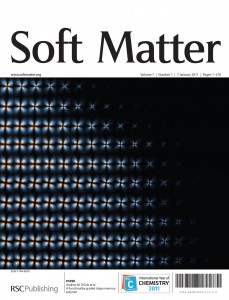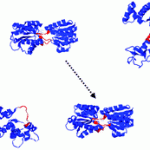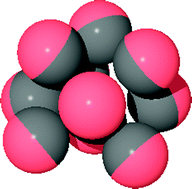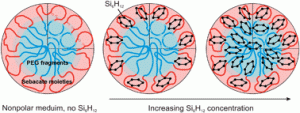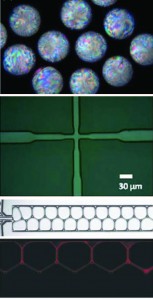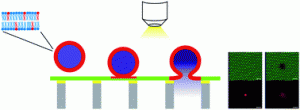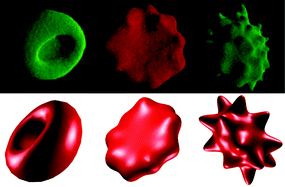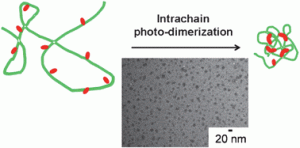 Preparation of polymer single chain nanoparticles using intramolecular photodimerization of coumarin. An easy method for preparing polymer single chain nanoparticles has been developed by scientists at Université de Sherbrooke, Canada. The method uses the photodimerization of coumarin groups located on the same chain to obtain the intrachain cross-linking required for chain collapse in solution. This approach be used as a nanoreactor for the synthesis of AuNPs and provides a way to optically control the kinetics of AuNP formation. (Soft Matter, 2011, Advance Article DOI:10.1039/C0SM01383H)
Preparation of polymer single chain nanoparticles using intramolecular photodimerization of coumarin. An easy method for preparing polymer single chain nanoparticles has been developed by scientists at Université de Sherbrooke, Canada. The method uses the photodimerization of coumarin groups located on the same chain to obtain the intrachain cross-linking required for chain collapse in solution. This approach be used as a nanoreactor for the synthesis of AuNPs and provides a way to optically control the kinetics of AuNP formation. (Soft Matter, 2011, Advance Article DOI:10.1039/C0SM01383H)
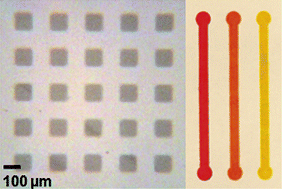 Three-dimensional patterning of porous materials using vapor phase polymerization. Scientists at University of Southern California, USA, have demonstrated that solventless initiated chemical vapor deposition can be used for three-dimensional patterning of porous substrates. They demonstrated the utility of their patterning process by fabricating three-dimensional hydrophilic and hydrophobic regions into the chromatography paper for use as paper-based microfluidic devices. The patterning process represents an environmentally friendly method to pattern three-dimensional materials since no organic solvents are used during the polymerization process or patterning step the team claim. (Soft Matter, 2011, Advance Article DOI:10.1039/C0SM01214A)
Three-dimensional patterning of porous materials using vapor phase polymerization. Scientists at University of Southern California, USA, have demonstrated that solventless initiated chemical vapor deposition can be used for three-dimensional patterning of porous substrates. They demonstrated the utility of their patterning process by fabricating three-dimensional hydrophilic and hydrophobic regions into the chromatography paper for use as paper-based microfluidic devices. The patterning process represents an environmentally friendly method to pattern three-dimensional materials since no organic solvents are used during the polymerization process or patterning step the team claim. (Soft Matter, 2011, Advance Article DOI:10.1039/C0SM01214A)
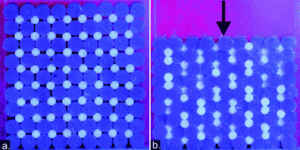 Deformation induced pattern transformation in a soft granular crystal. A novel pattern transformation when regular arrays of macroscopic particles are subjected to uniaxial compression has been discovered by a team of scientists based in USA, UK, and The Netherlands. The team used a combined experimental and numerical study to uncover the transformation. They say the 2D granular crystals studied in the current study combined with pattern transformation could find interesting applications in tunable phononic devices and that the same mechanism could offer colour tuning by mechanical loading and other novel applications in photonic crystals. (Soft Matter, 2011, Advance Article DOI:10.1039/C0SM01408G)
Deformation induced pattern transformation in a soft granular crystal. A novel pattern transformation when regular arrays of macroscopic particles are subjected to uniaxial compression has been discovered by a team of scientists based in USA, UK, and The Netherlands. The team used a combined experimental and numerical study to uncover the transformation. They say the 2D granular crystals studied in the current study combined with pattern transformation could find interesting applications in tunable phononic devices and that the same mechanism could offer colour tuning by mechanical loading and other novel applications in photonic crystals. (Soft Matter, 2011, Advance Article DOI:10.1039/C0SM01408G)











